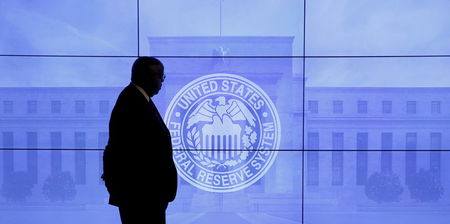Fed’s Goolsbee says central bank will react to signs of weakness in economy-CNBC
2024.08.05 09:21

Chicago Federal Reserve President Austan Goolsbee stated on Monday that the central bank is prepared to respond to signs of economic weakness, hinting that current interest rates may be too prohibitive.
When asked about whether a weakening labor market and manufacturing sector might prompt action from the Fed, Goolsbee avoided committing to a specific course but mentioned it doesn’t make sense to maintain a “restrictive” policy stance if the economy is softening.
“The Fed’s job is very straightforward, maximize employment, stabilize prices, and maintain financial stability. That’s what we’re going to do,” he said during an interview on CNBC’s “Squawk Box” program.
“We’re forward-looking about it. So if the conditions collectively start coming in like that on the through line, there’s deterioration on any of those parts, we’re going to fix it.”
The interview took place amid significant market turmoil. dropped nearly 1,300 points, or about 3%, as Treasury yields fell sharply. The dropped 3.7%, while lost 5.1%.
The sell-off continued a downward trend that started on Thursday, following the Fed’s decision not to lower interest rates, sparking concerns that policymakers might be falling behind as inflation declines and the economy weakens.
Concerns escalated on Friday when the Labor Department reported that nonfarm payrolls grew by just 114,000, and the unemployment rate rose to 4.3%, triggering the Sahm Rule, which signals a potential recession.
However, Goolsbee does not believe a recession is imminent.
“Jobs numbers come in weaker than expected, but not looking yet like recession,” he said. “I do think you want to be forward-looking of where the economy is headed for making the decisions.”
Goolsbee acknowledged that current Fed policy is restrictive, a stance suitable only if the economy appears to be overheating. The central bank has kept its benchmark rate between 5.25% and 5.5% since July 2023, the highest in about 23 years.
“Should we reduce restrictiveness? I’m not going to bind our hands of what should happen going forward, because we’re still going to get more information. But if we are not overheating, we should not be tightening or restrictive in real terms,” he said.
Policymakers have focused on the “real” Fed funds rate, which is the Fed’s benchmark rate minus the inflation rate. As inflation falls, the real rate rises unless the Fed cuts rates. The real rate is currently around 2.73%, while Fed officials believe the long-term real rate should be closer to 0.5%.
Markets are now expecting aggressive easing by the Fed, starting with a 0.5 percentage point rate cut in September, which is fully priced in according to 30-day fed funds futures contracts. Traders expect the central bank to reduce the funds rate by 1.25-1.5 percentage points by the end of the year, according to the CME Group’s FedWatch Tool.








